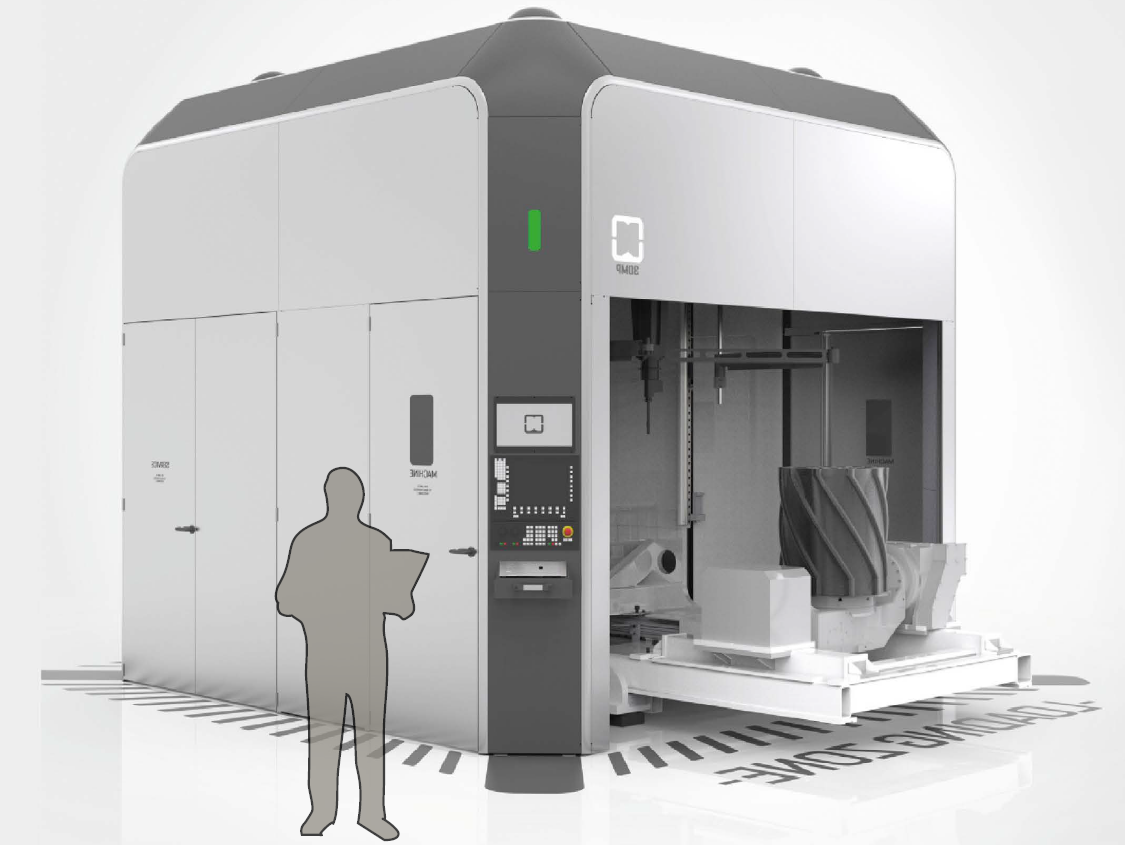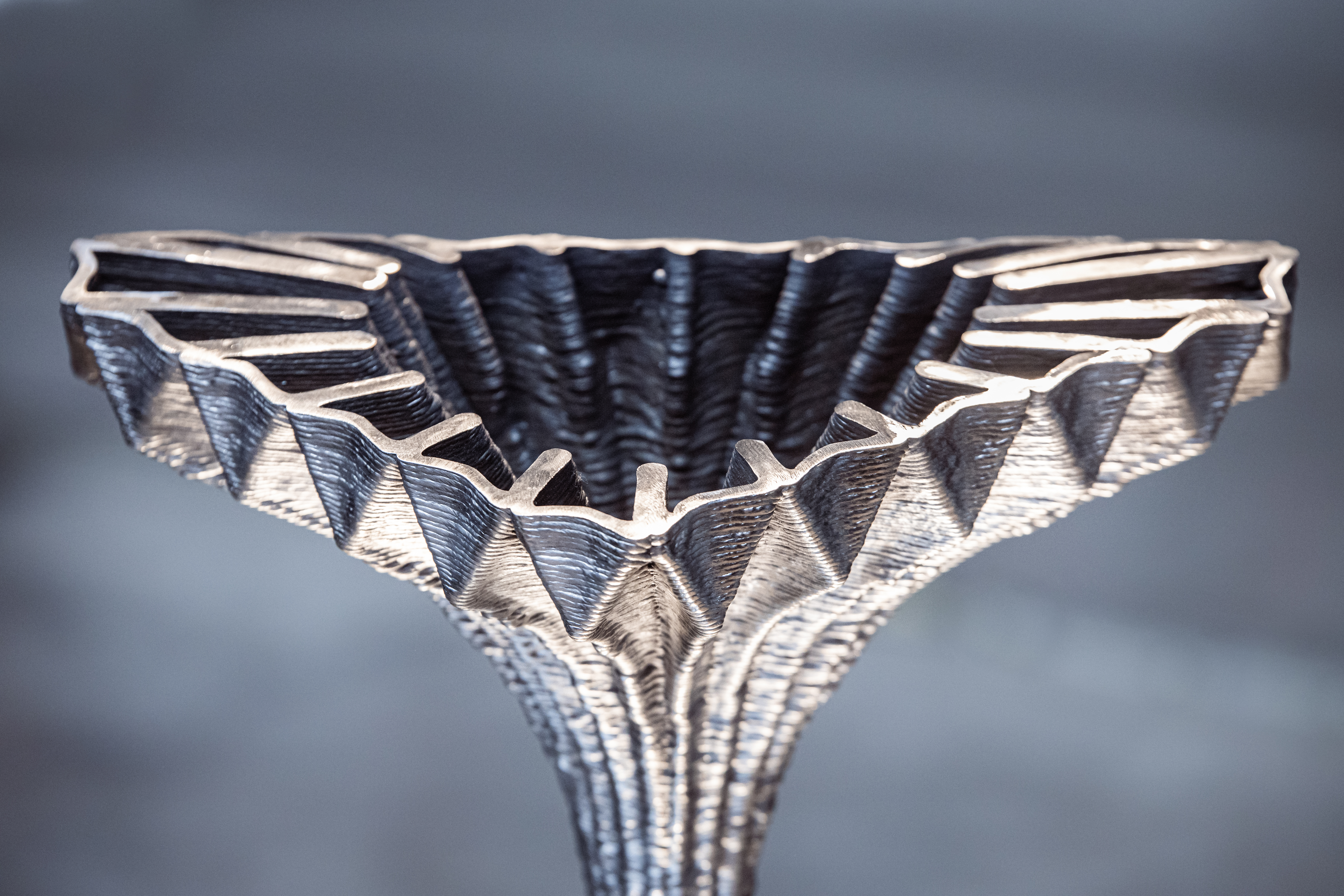Challenges of the project exist on several levels, here a few: Finding the sweet spot between economic feasibility and added value Although the 3DMP-Technology is one of the fastest additive manufacturing processes, it is still expensive. We believe that additional value for end customers and the creative sector can be created, yet, pivoting the economic and technical constraints against functional and aesthetic advantages is one challenge. Understanding “creatives” The 3DMP-technology was developed for large industrial metal parts, e.g. for ships or airplanes. For these industrial applications the surfaces of the printed part have to be milled in order to function properly. Yet, the unprocessed artisanal surfaces can be used as an artistic feature in creative segments and distinguish it from other technologies. 3DMP-Living is an internal spin-off that aims to unveil and develop economic business cases for large scale metal print in the fields of architecture, art and design. Compared to other 3D metal printing methods the technology is cost efficient and enables the designer to think on a large scale (up to 3 cubic meters) and create real size objects that are sustainable and functional. This lifts 3D-printing from the status of “prototyping” to the status of “production”. Additionally, it is the only additive manufacturing technology which offers the possibility to combine different metals during the print process.

Having first explored the potential of standardized flexible plastic flexible materials supported by metal laser-cut frameworks in a series of temporary objects and installations (OS) , then secondly the potential of CNC free-form bended metal pipes (BM) for permanent urban projects, the use of 3D metal robotic additive large scale printing could be the next stage in the further development of the OnSite project,

Sebastien Wierinck (b. 1975, Kortrijk, Belgium) lives and work in Marseilles -
Since 2006 he works as an independent artist and designer. His works focus on public furniture objects and temporary installations. Other works
Major projects includes a commission for a series of functional sculptures in The Hague- The Netherlands, a series of custom public benches for the City of Nancy – France , a bench design for the Palais de Tokyo, a monumental temporary installation for the J1 building commissioned by MP13, a bar design and a brewery interior design for the Centquatre, the cultural center of the city of Paris.
His clients include the city of The Hague – NL, the city of Nancy – Fr. the French National Railroad Company SNCF, Honda Europe, Vodafone, the French public furniture brand
He collaborated with several cultural organizations and institutions, including Stroom den Haag, Todaysart, Club Transmediale Berlin, Strelka
For this residency, artist Sébastien Wierinck collaborates with Flying Parts. Sébastien’s work involves large-scale public pieces of work / furniture and procedural / modular design, and Flying parts are specialized in large-scale metal 3D printing. Together, they worked on a modular, large-scale metal 3D printed piece of public art, pushing to the limits of metal 3D printing. The exact goal of the residency was very open and evolved in regard of the technical limitations of the machines and the surprises happening during the process.

@Quentin Chevrier
The approach of going modular, parametric, fits really well in the context of metal 3D printing. The residency threw light on the artist’s rapid feedback & iteration method, which was very suitable to such a project. Innovation happened in the workflow, but also when playing in the constraints of the technology: the artist found clever ways to overcome some of the limitations of the printing machine, that might become best practices in large-scale metal 3D printing. New general (art-science collaboration) and specific (large-scale metal 3D printing) know-how and perspectives were created for the Artist as much as for the Tech Project, and the Producer too.
Residency final video